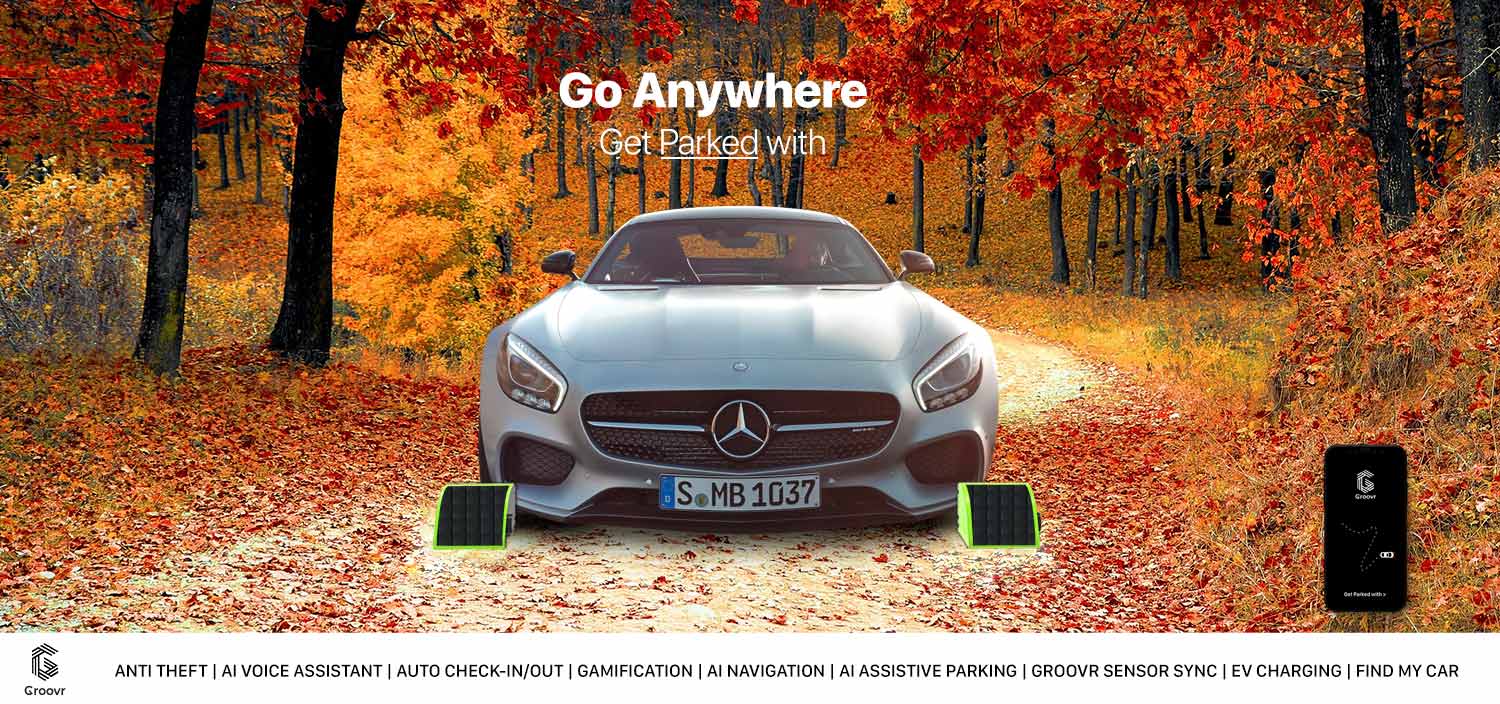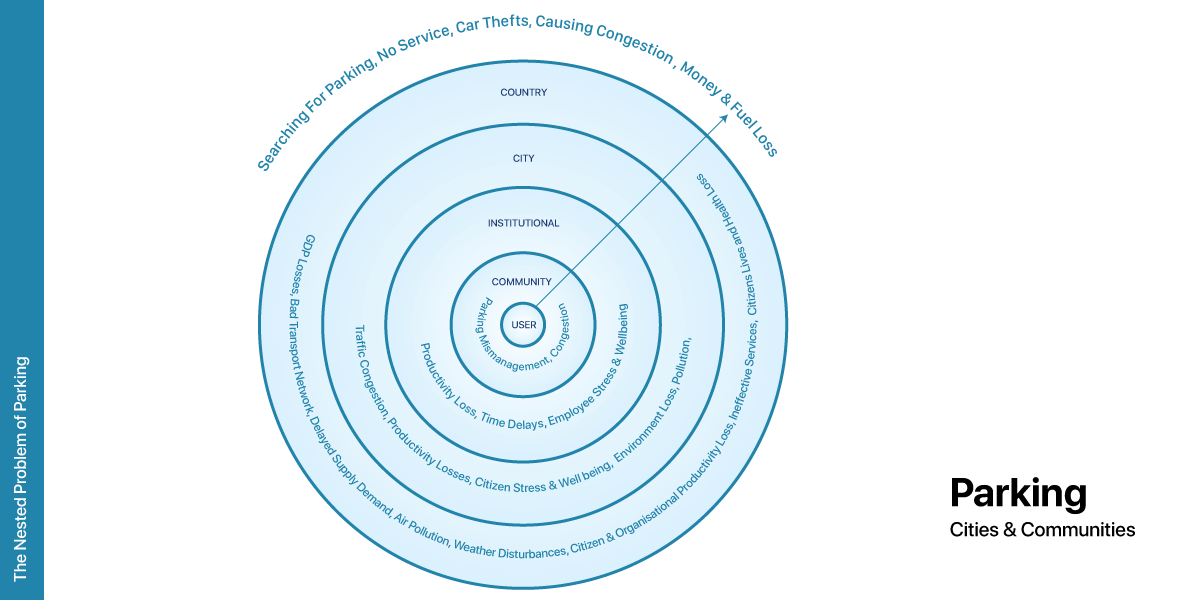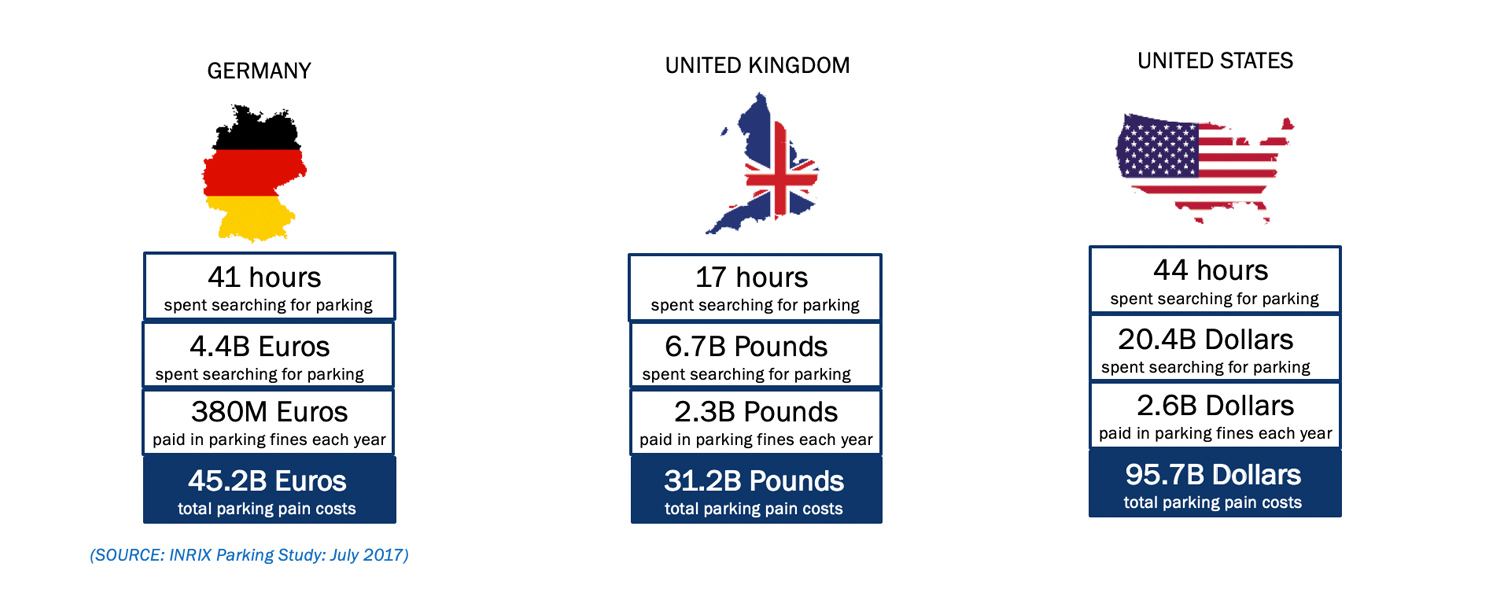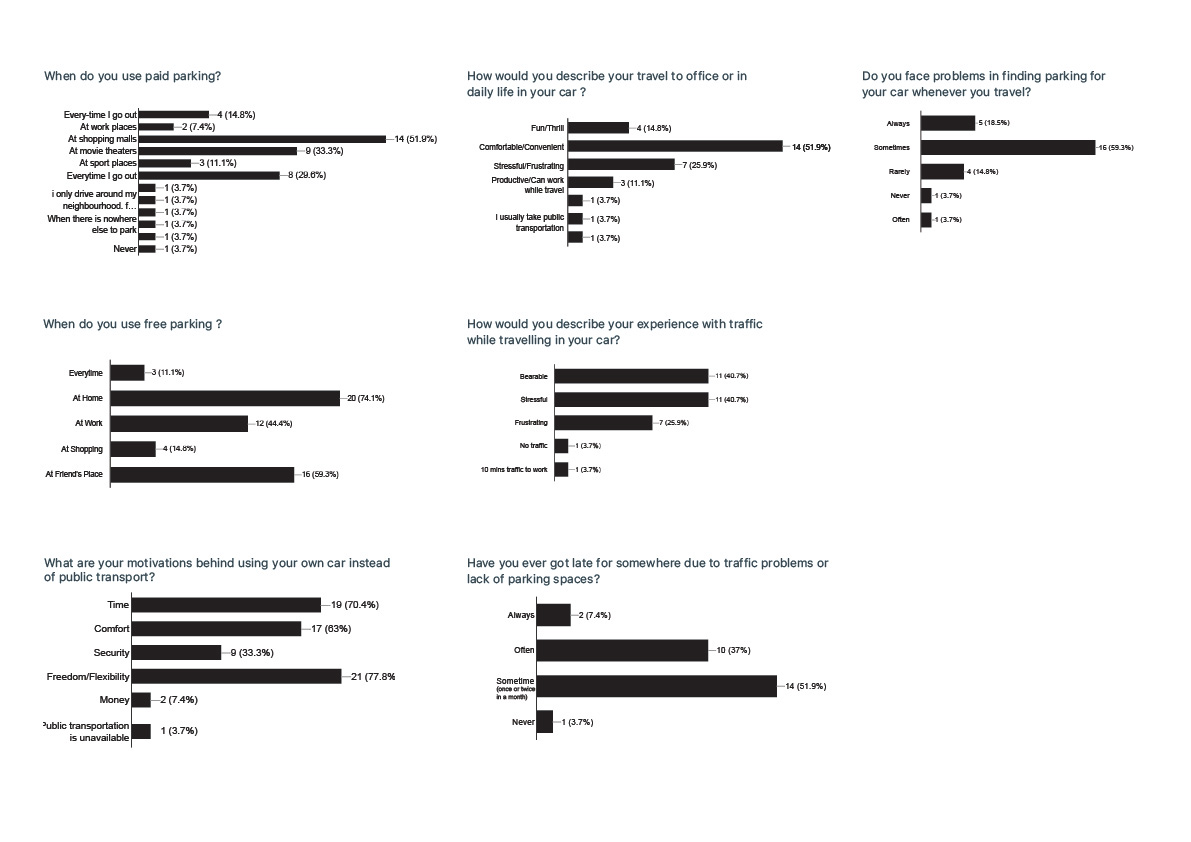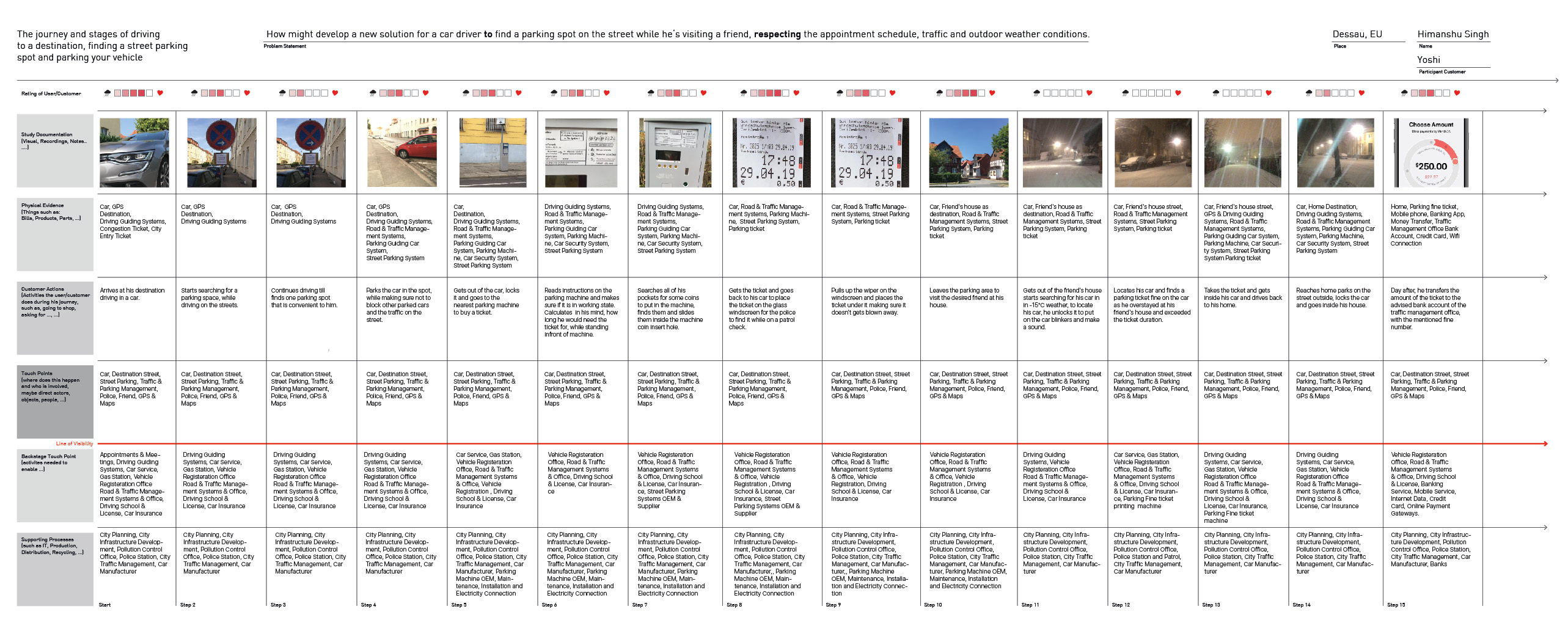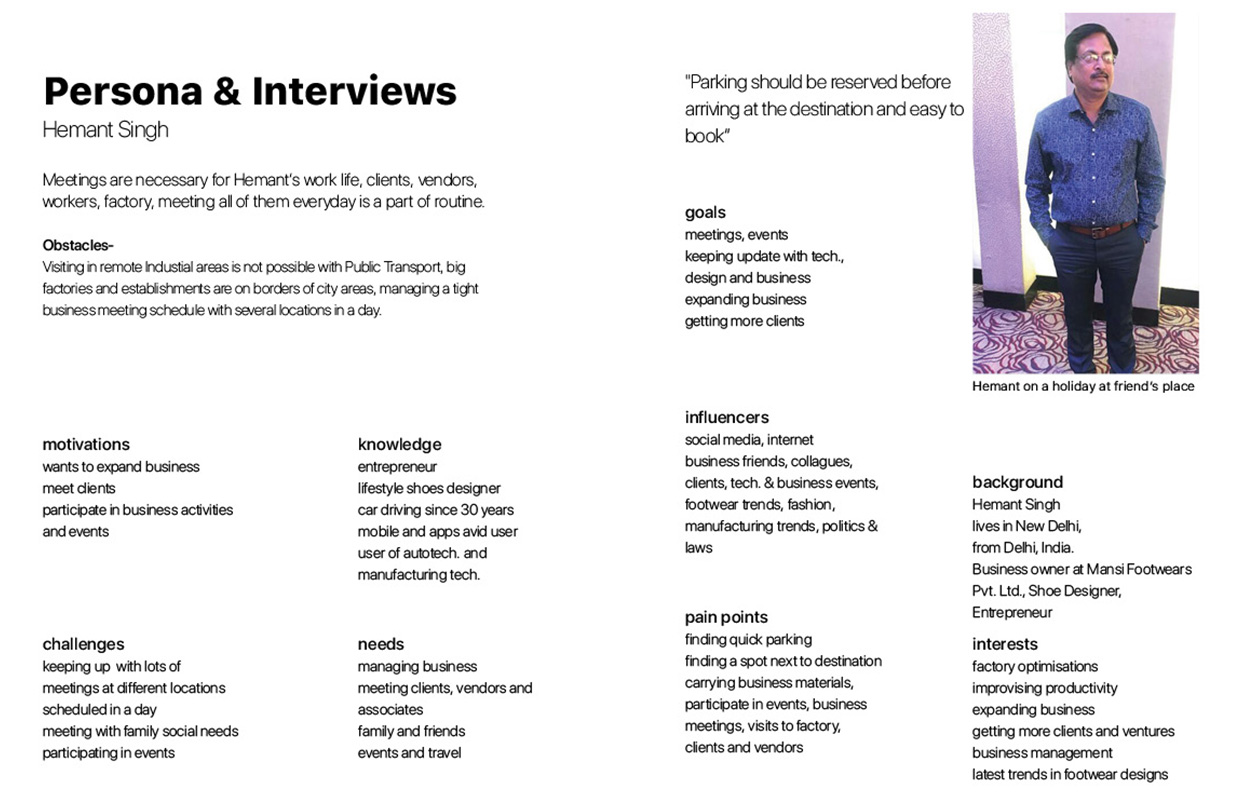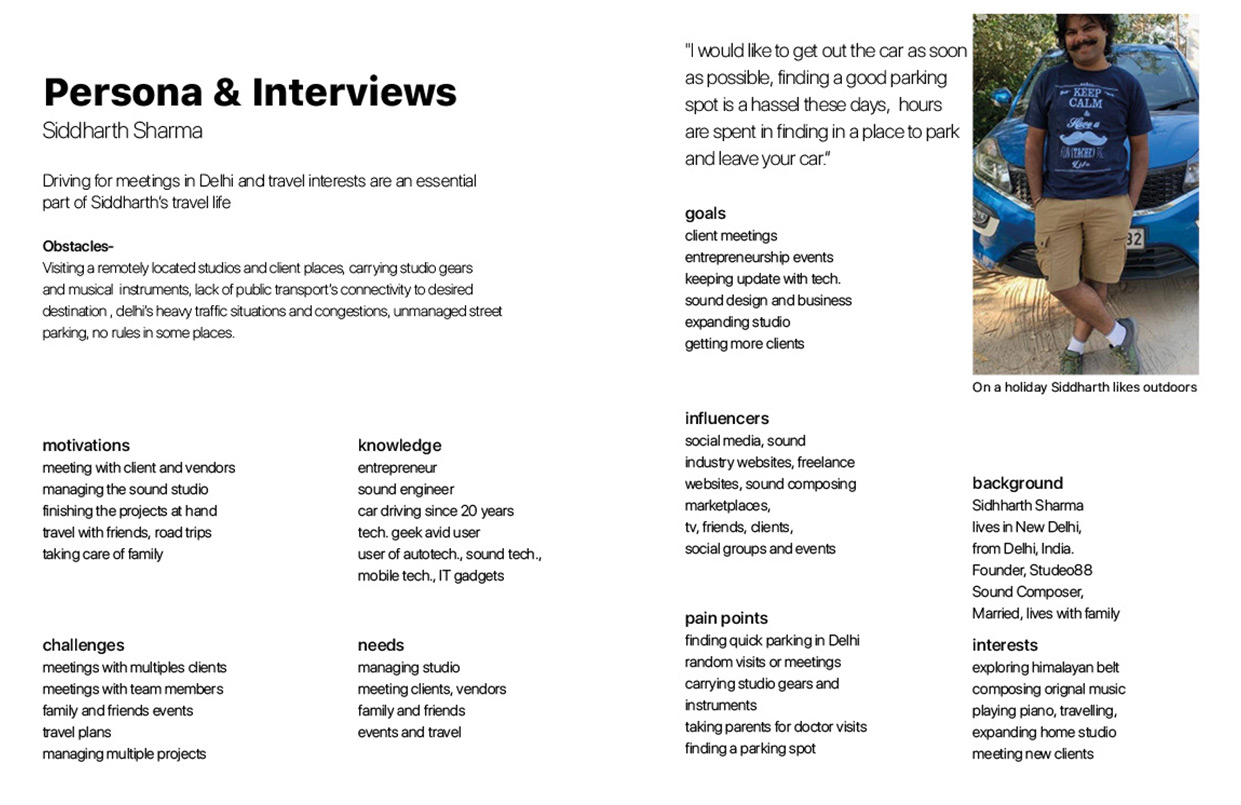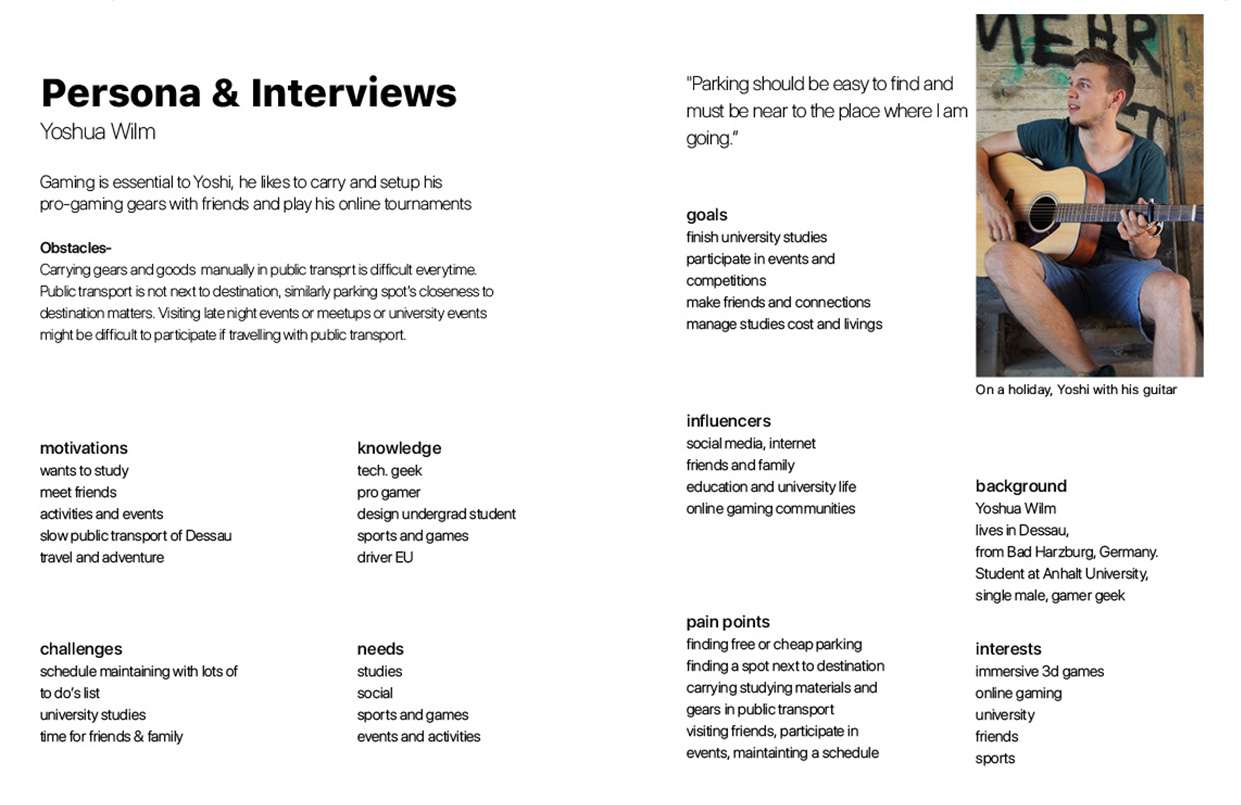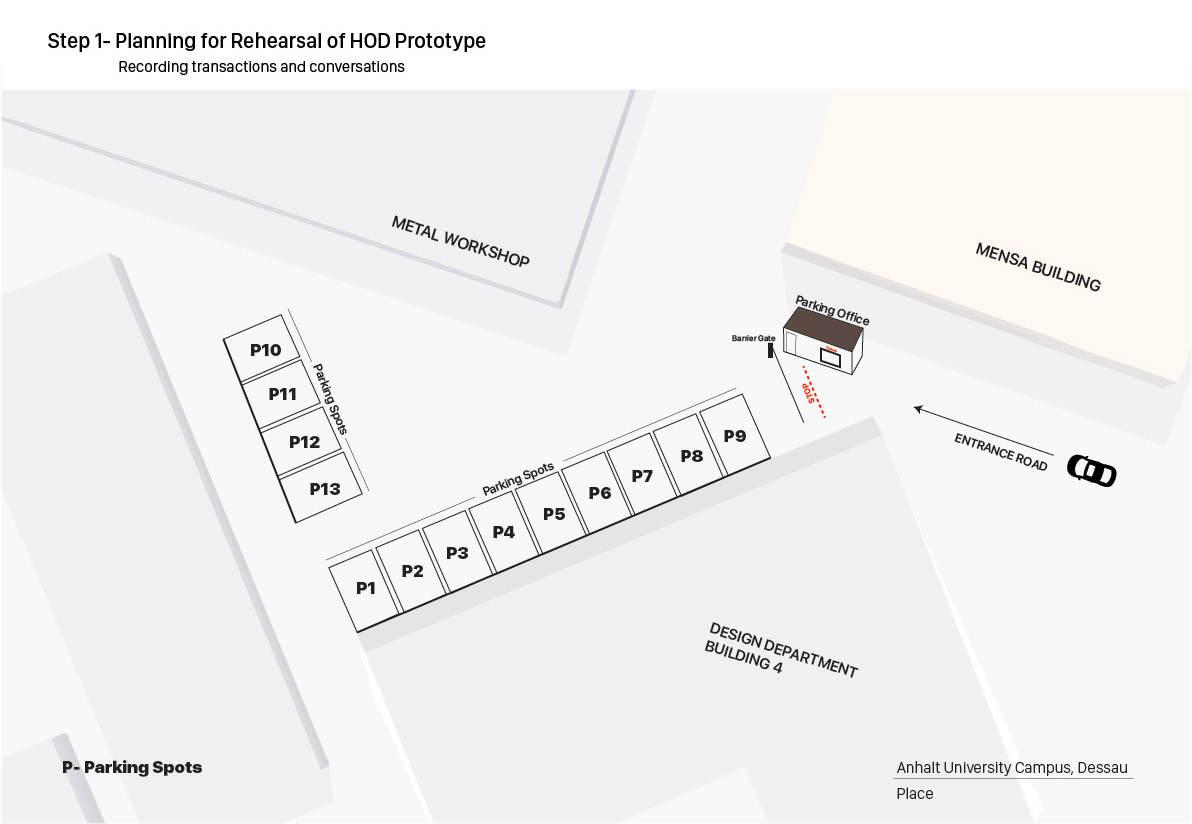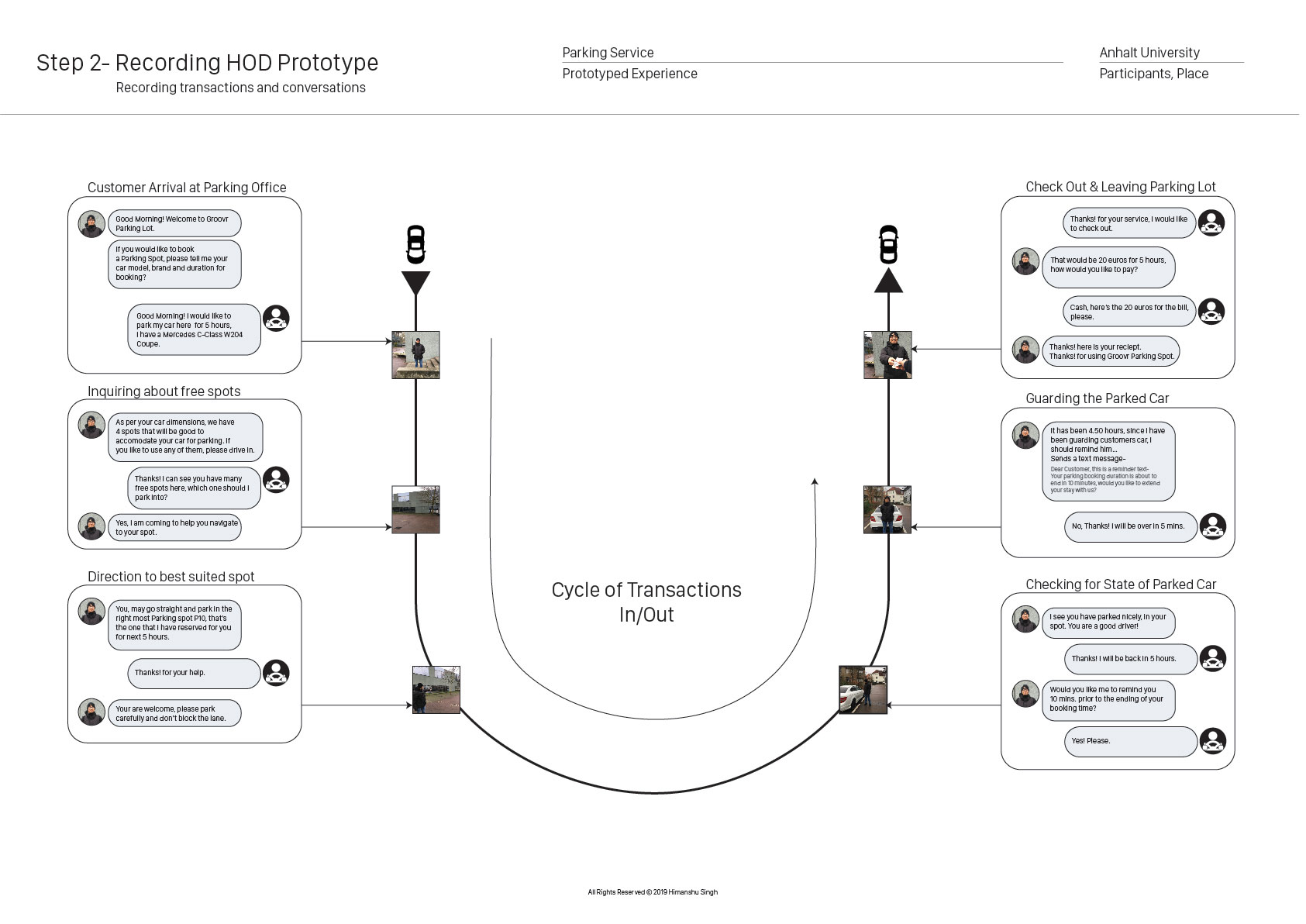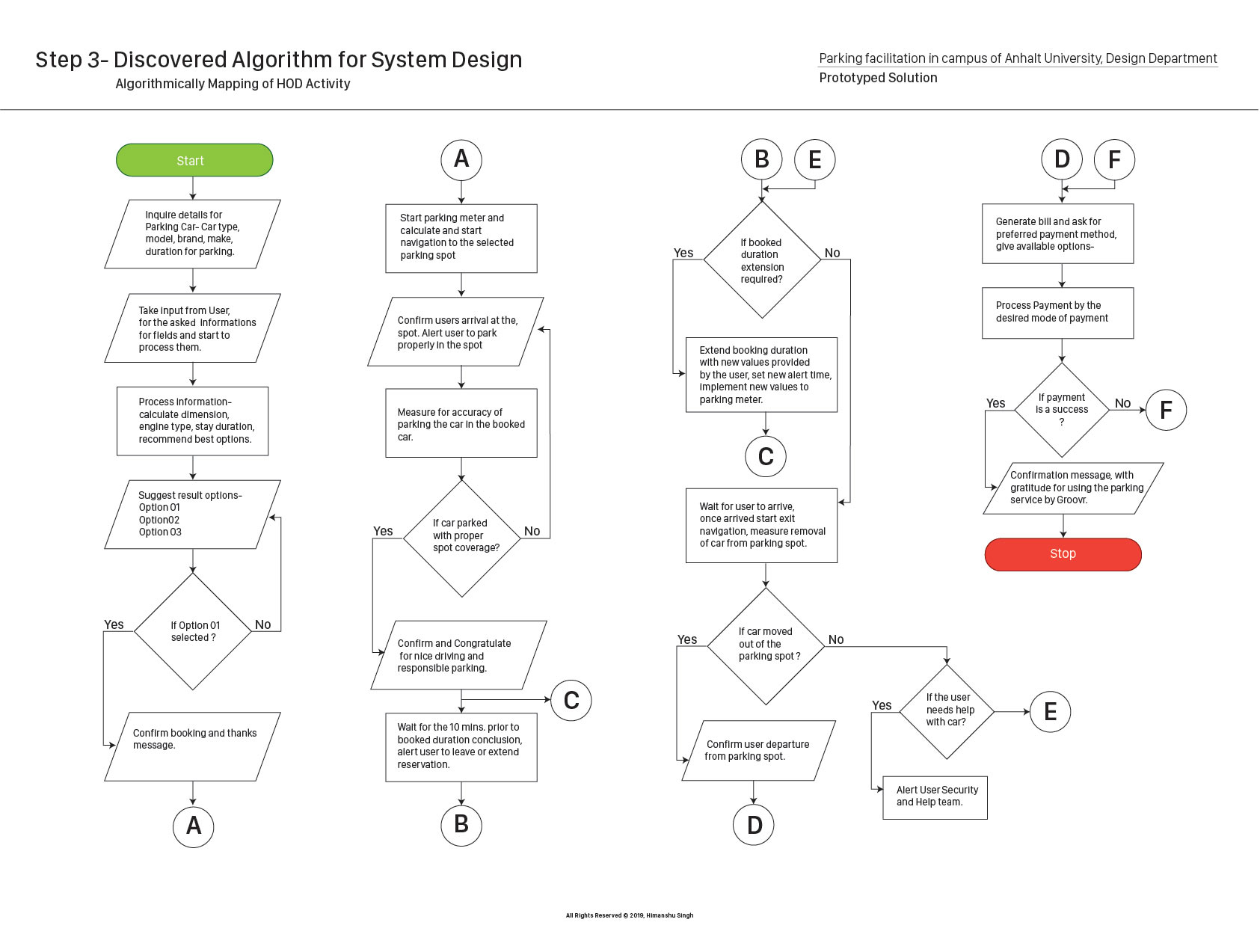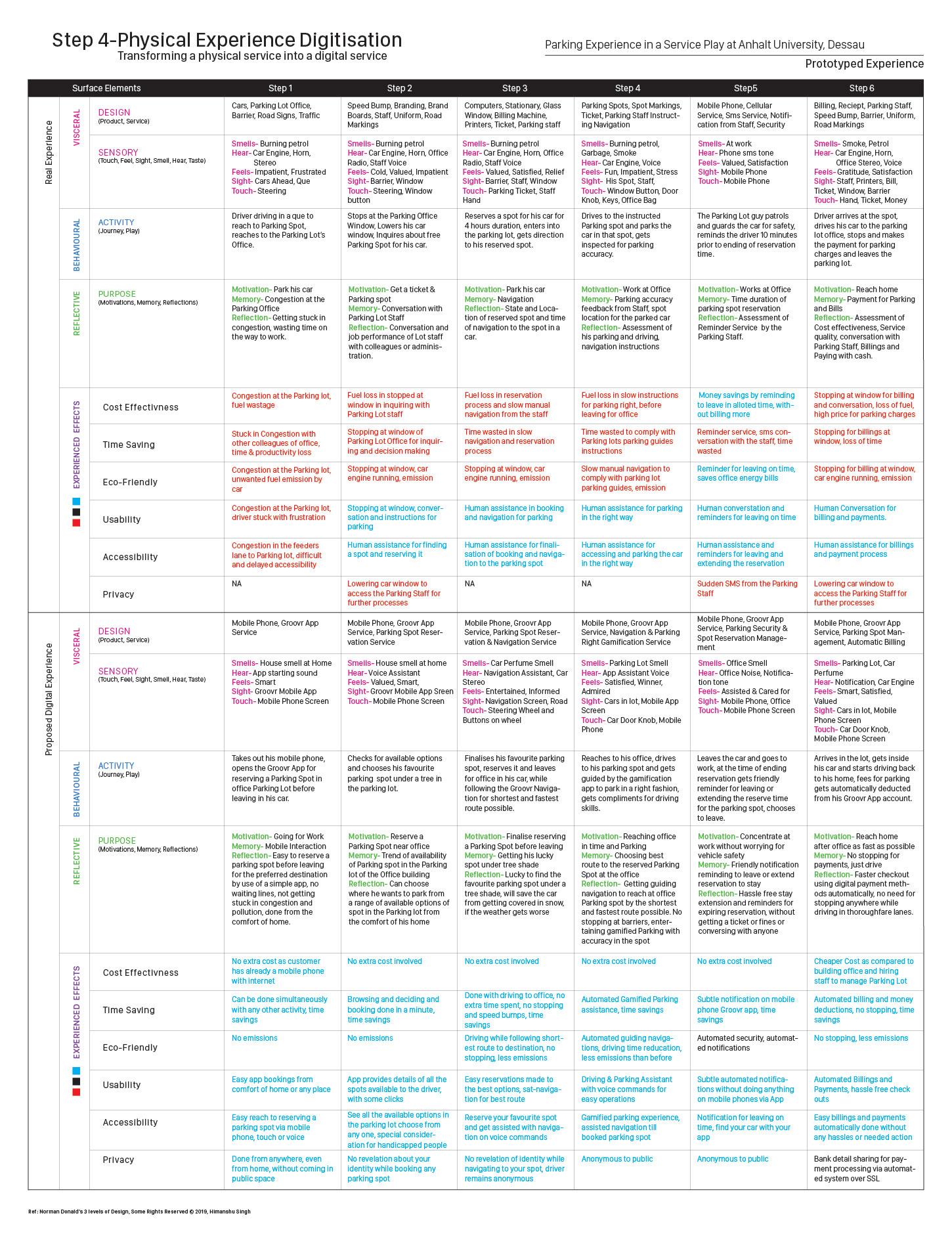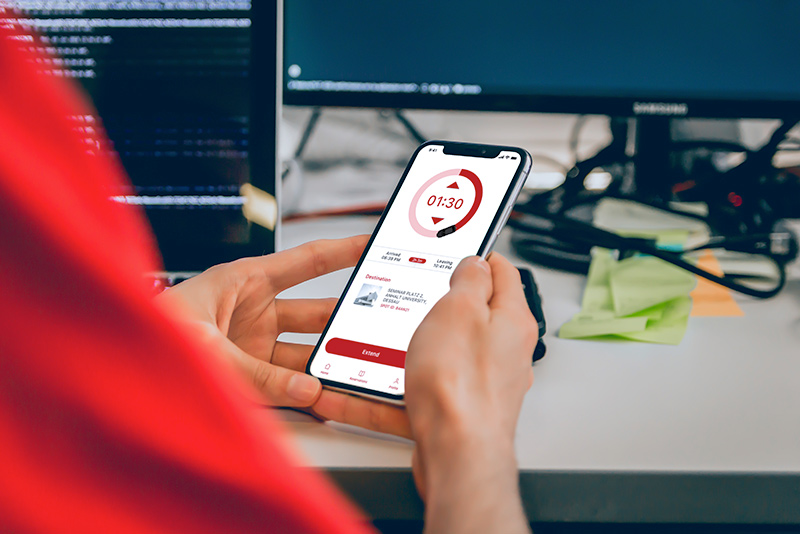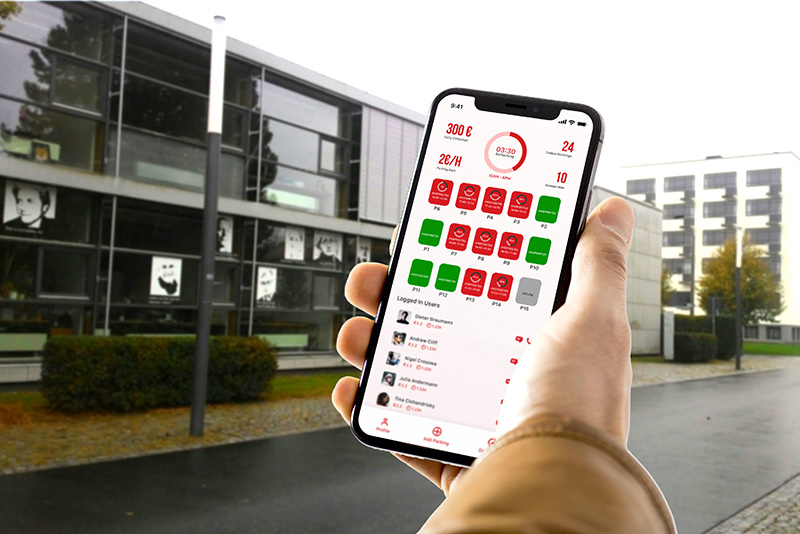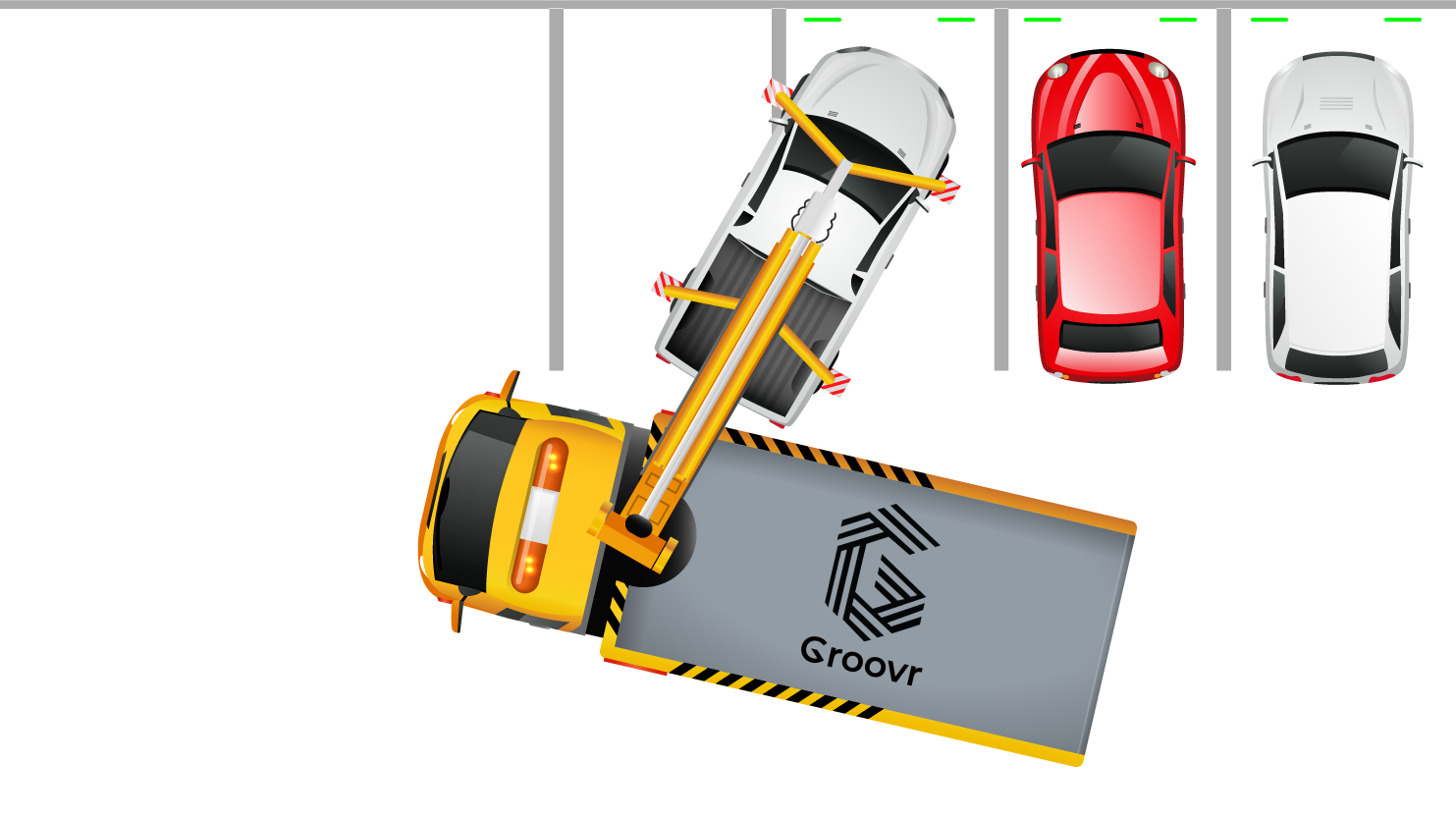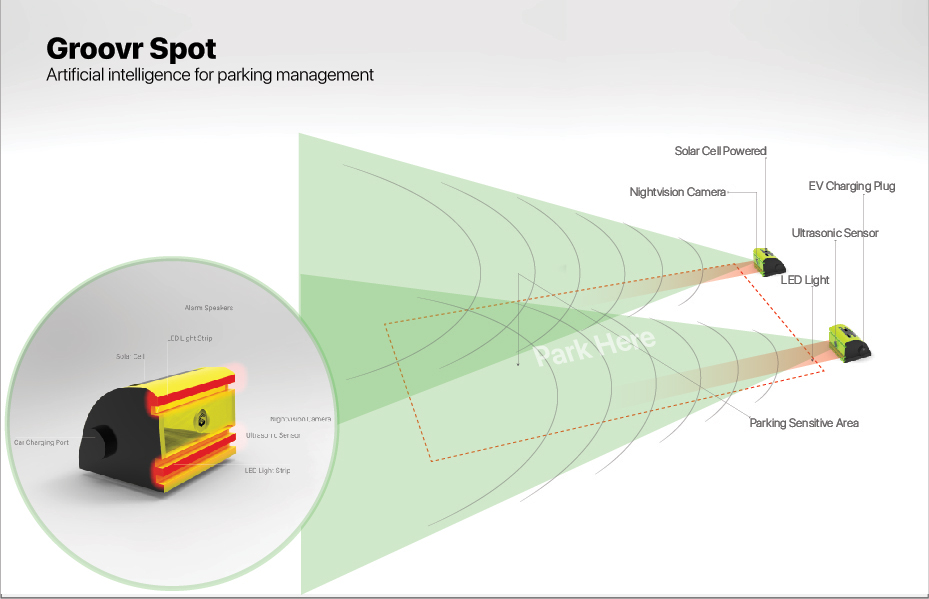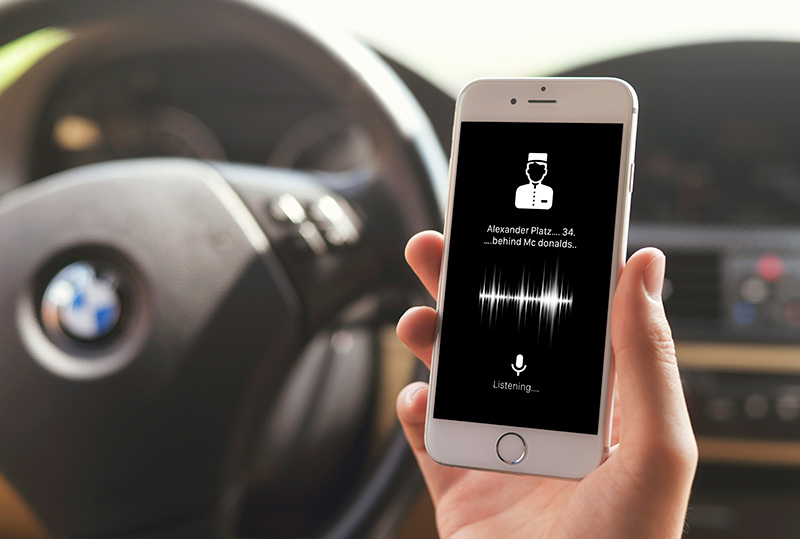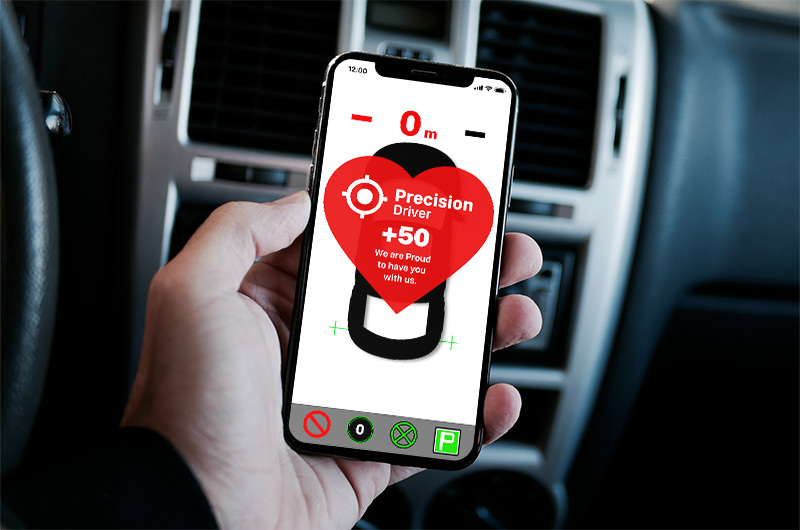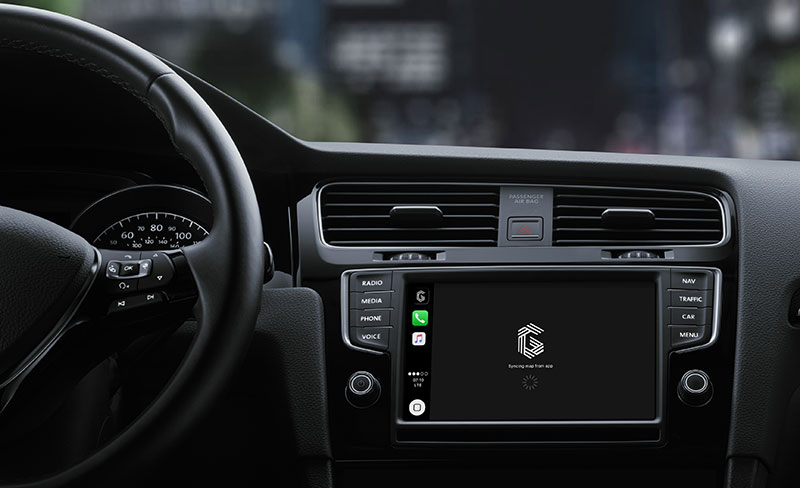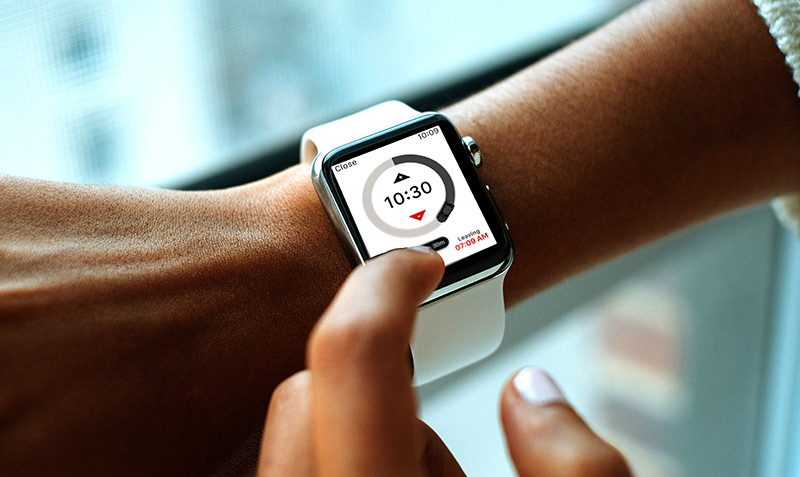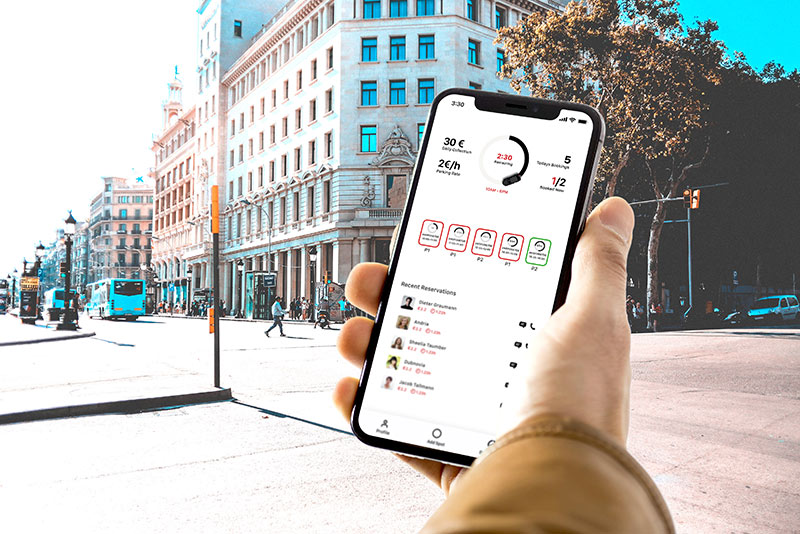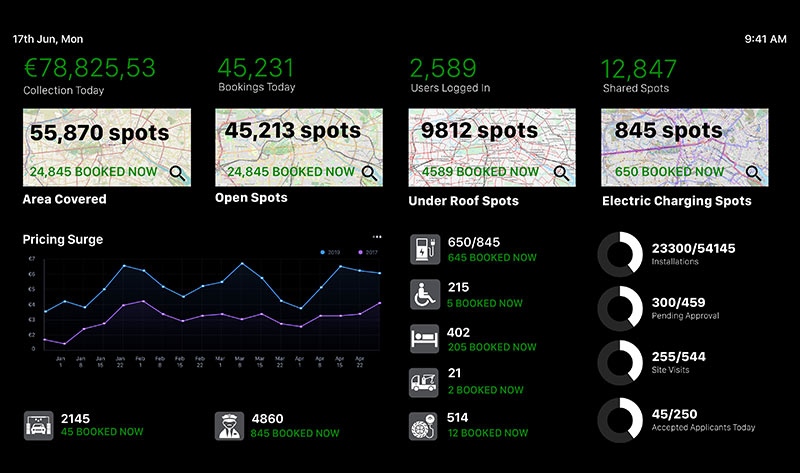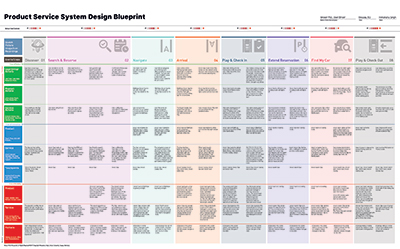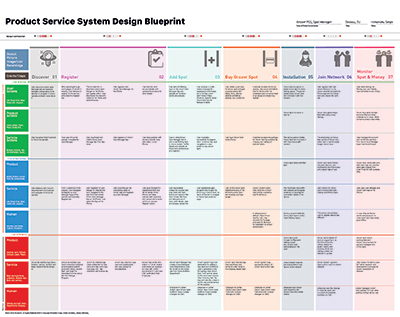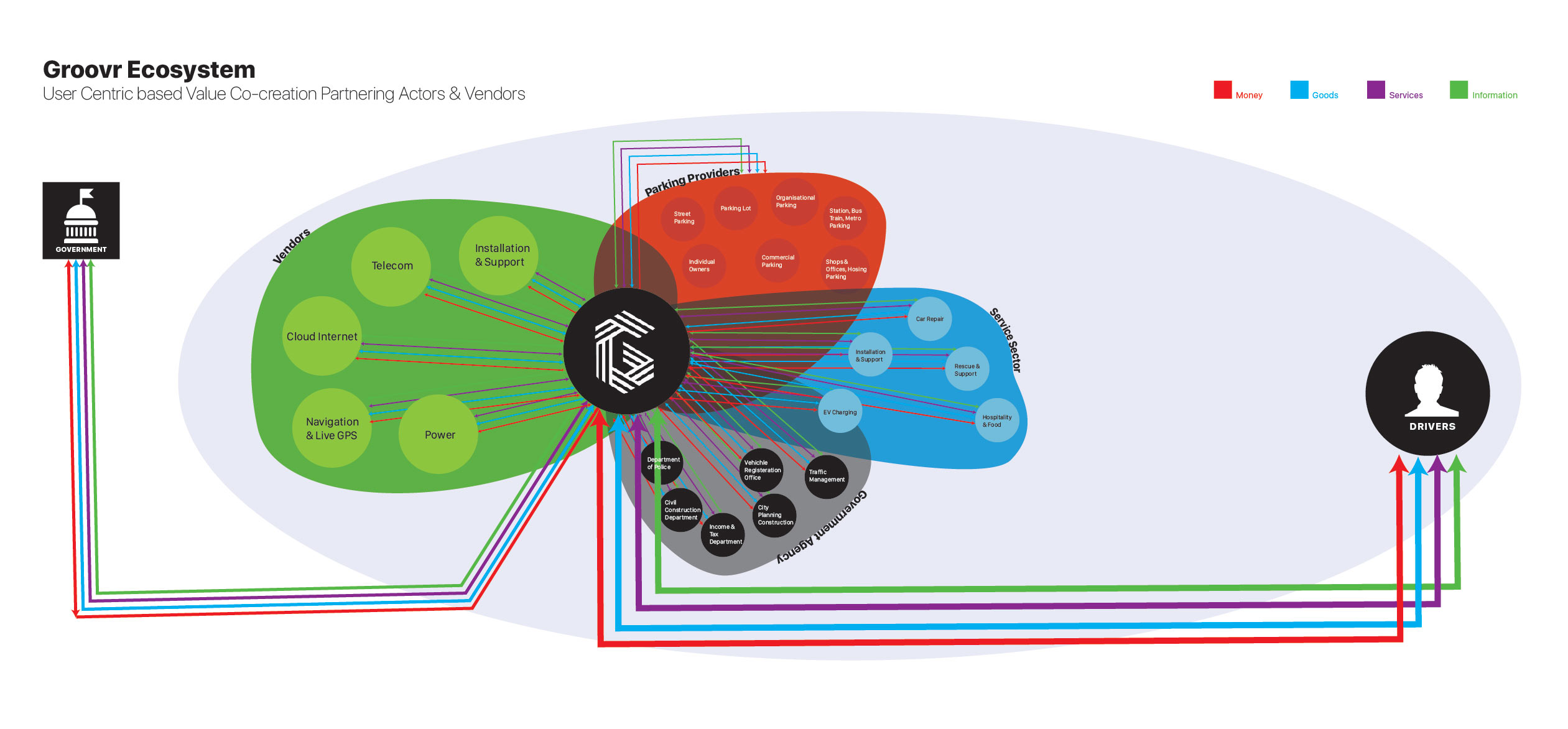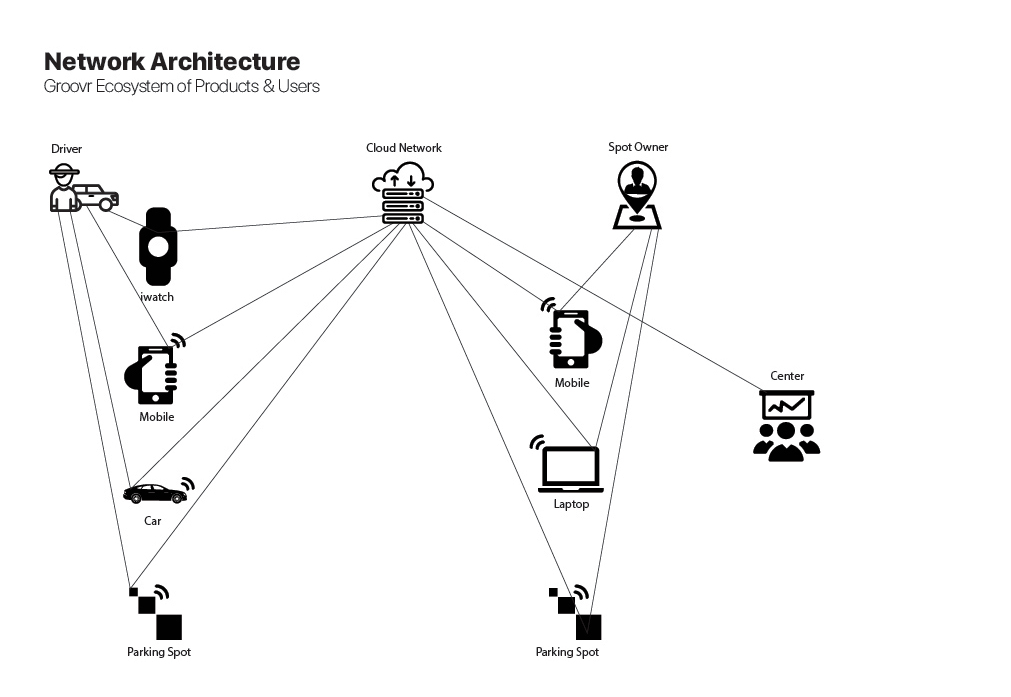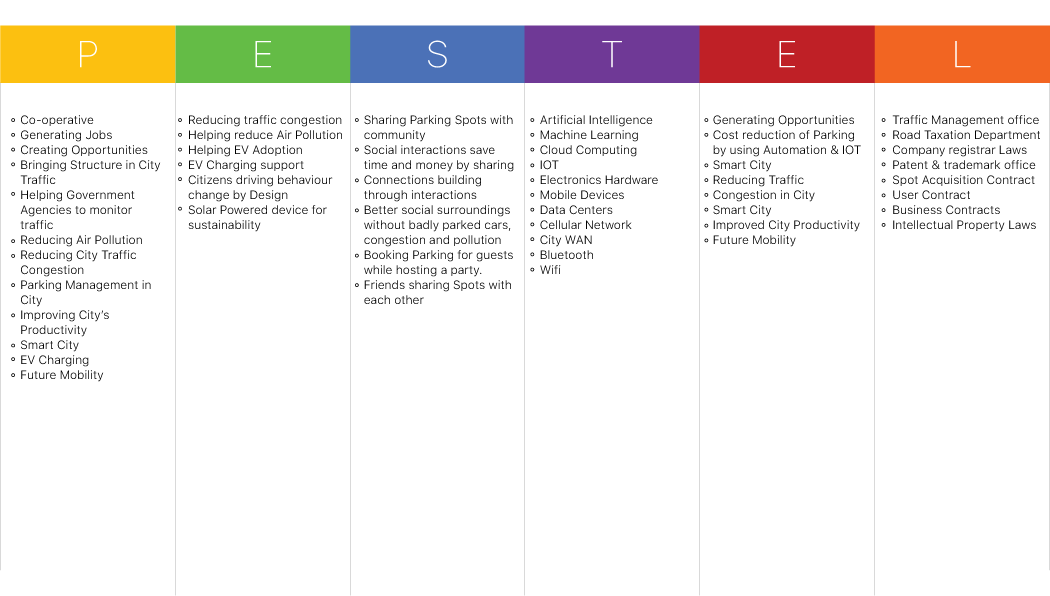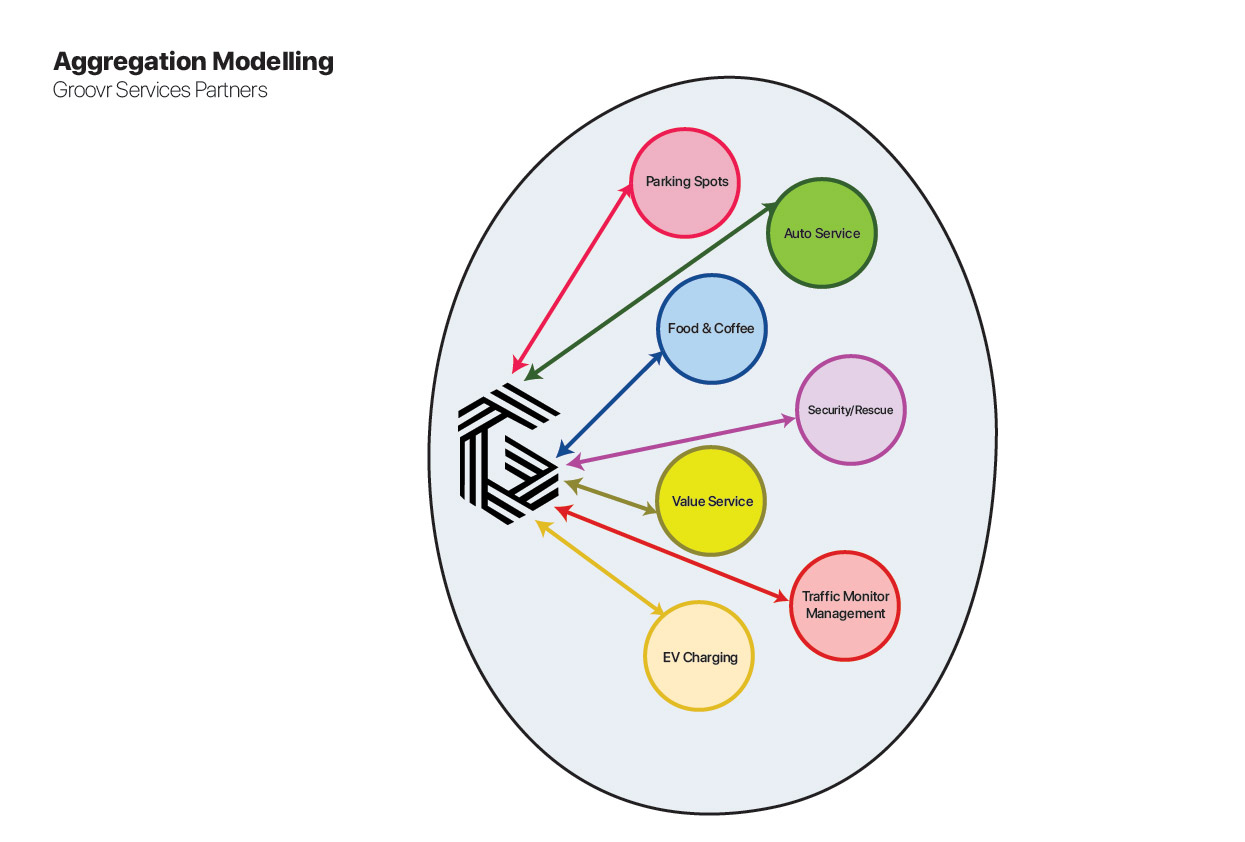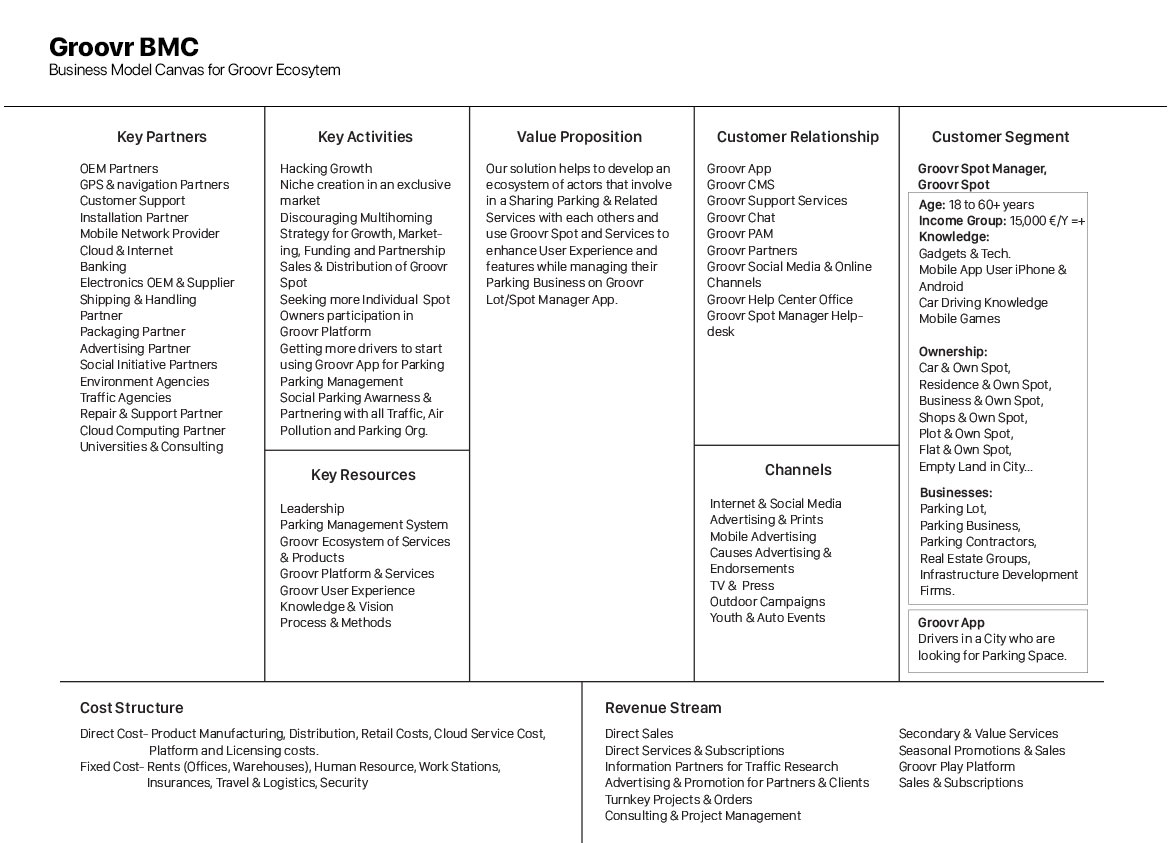About Project Groovr
Design Team
Prof. Petra Mueller-Csernetzky(Mentor)
Prof. Sandra Giegler(Mentor)
Himanshu Singh (PSS Designer)
Master Thesis Topic:
1. Designing Process for Ecosystem Product Service Systems & Platforms Based Disruptive Ventures
2. Application of Above Method to Solve the Problem of Finding Parking in Social Spaces in a Smart Cities
Place
Anhalt University of Applied Sciences, Dessau, Germany
Presentation
To see the presentation of this porject, please click here
Background:
In Urban life, the role of a car is associated with freedom, adventure, utility, protection and comfort. With an increase of car ownership in urban landscapes today, modern metropolitan cities face problems of traffic congestion, that leaves havoc on our economy, environment and productivity. Traffic Congestions today in developed nations costs citizens about $1000 every year, that they lose while sitting in traffic. According to a study
conducted by
Donald Soup and Robert
Hampshire, they found
15% of traffic is cruising
for a paking space
and that‘s leading to
congestions and jams in city traffic.
Facts & Figures:
As per a study conducted in 2017 by INRIX, across 19 countries in the EU,
the total economic impact
of the traffic hotspots
identified in the study is
£183.2 billion over the
next decade. The UK
faces the greatest cost
(£61.8 billion) followed by
Germany (£41.9 billion).
Road traffic today badly affects the lives of citizens and causes major losses to businesses. City traffic affects air pollution levels of the city and adds to the carbon footprint. In Delhi, India, doctors advise sensitive groups to wear a mask for breathing while going out of their houses.
Exploration and Process

The design process comprises of 4 stages: Design Space Exploration, Hands-on Deck Prototyping, Minimum Viable Product Prototyping and Exponential Ecosystem Design Prototype. Design Space Exploration serves as the initial design research phase, where we conduct surveys, interviews and investigation to comprehend the problem from various perspectives and formalise a problem statement to apply our further design process to it. Once, we have the problem statement, we apply HOD method, the first stage of our design process, to investigate the experience of parking and understand the nuances of working
of a parking lot at a small scale that is available to us. We conduct this investigation by staging and rehearsing the Parking Lot (HOD Design Method) with a team and discover valuable insights to come up with a prototype of our first solution at a small scale. Later test this solution with users and scale this prototype from lab or university to a prototyped design solution to serve a small city following a minimal viable ecosystem of actors involved in the parking business. Following our MVP results, we scale this prototyped experience to a much larger scale, Exponential Ecosystem Prototyping,
to address these problems at a systemic scale. Post conducting our systems design research and finding actors to work with, we come up with an ecosystem of products and services that can challenge these problems caused by parking, traffic at a city, state or country level.
Design Research
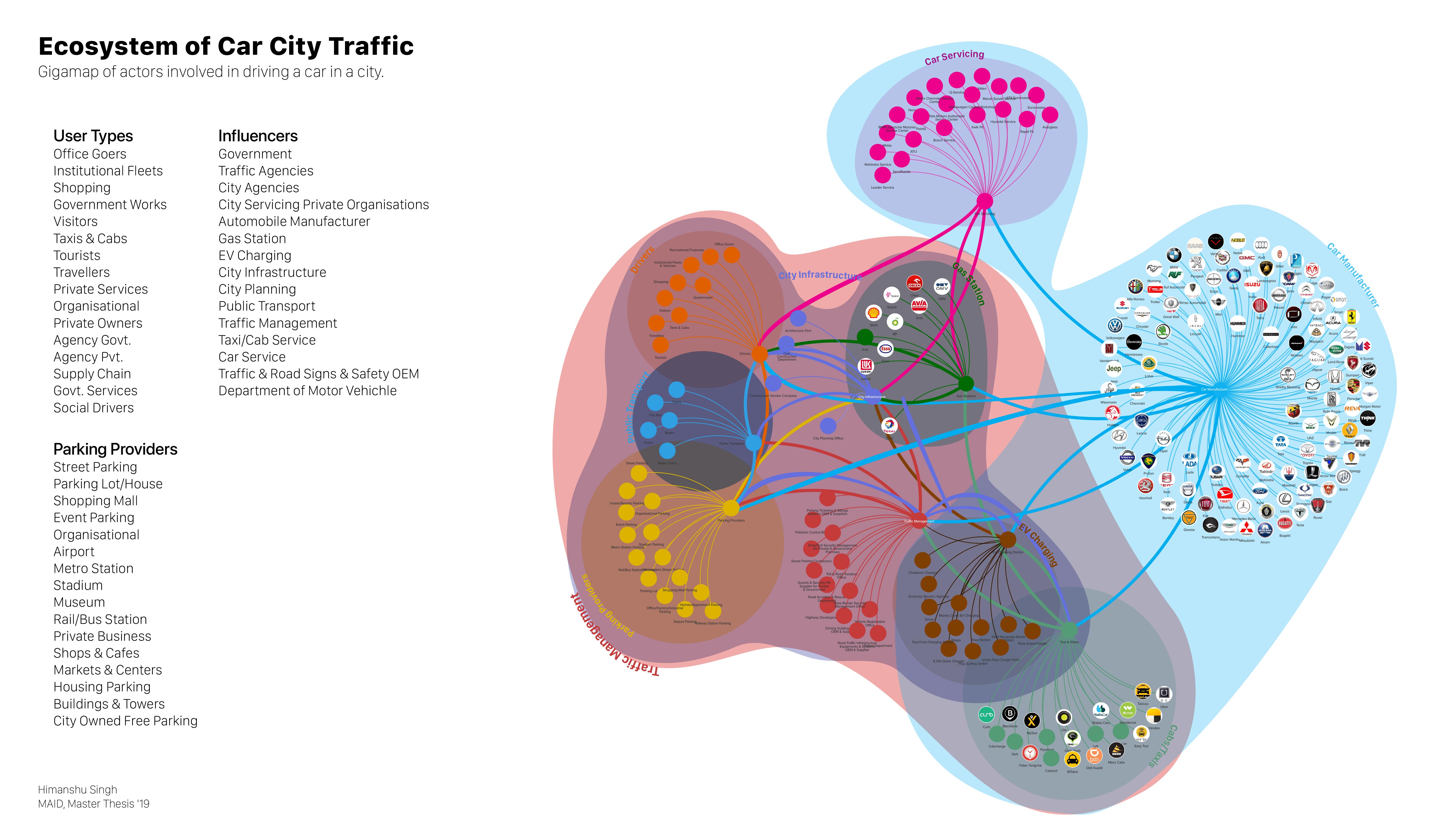
The parking ecosystem of a city comprises of complex relationships among different actors, institutions and organisations. Post conducting an ecosystem analysis of parking service of a city, we categorised all actors into three groups: drivers, parking providers and influencers. The mapping resulted in a Gigamap that illustrates various connections, dependabilities and influence of one industry or institution over the parking service and the ecosystem.
Users
Office Goers, Institutional Fleets, Shopping, Government Works, Visitors, Taxis & Cabs, Tourists, Travellers, Private Services, Organisational, Private Owners, Agency Govt., Agency Pvt., Supply Chain, Govt. Services, Social Drivers,
Parking Providers
Street Parking, Parking Lot/House, Shopping Mall, Event Parking, Organisational, Airport, Metro Station, Stadium, Museum, Rail/Bus Station, Private Business, Shops & Cafes, Markets & Centers, Housing Parking, Buildings & Towers, City Owned Free Parking
Actors
Government, Traffic Agencies, City Agencies, Private Organisations, Automobile Manufacturer, Gas Station, EV Charging, City Infrastructure, City Planning, Public Transport, Traffic Management, Taxi/Cab Service, Car Service
Problem Statement
How might we develop a solution for a car driver to help him find a Parking Space near his destination before he arrives, respecting driving time, traffic and congestion.
Design Prototypes
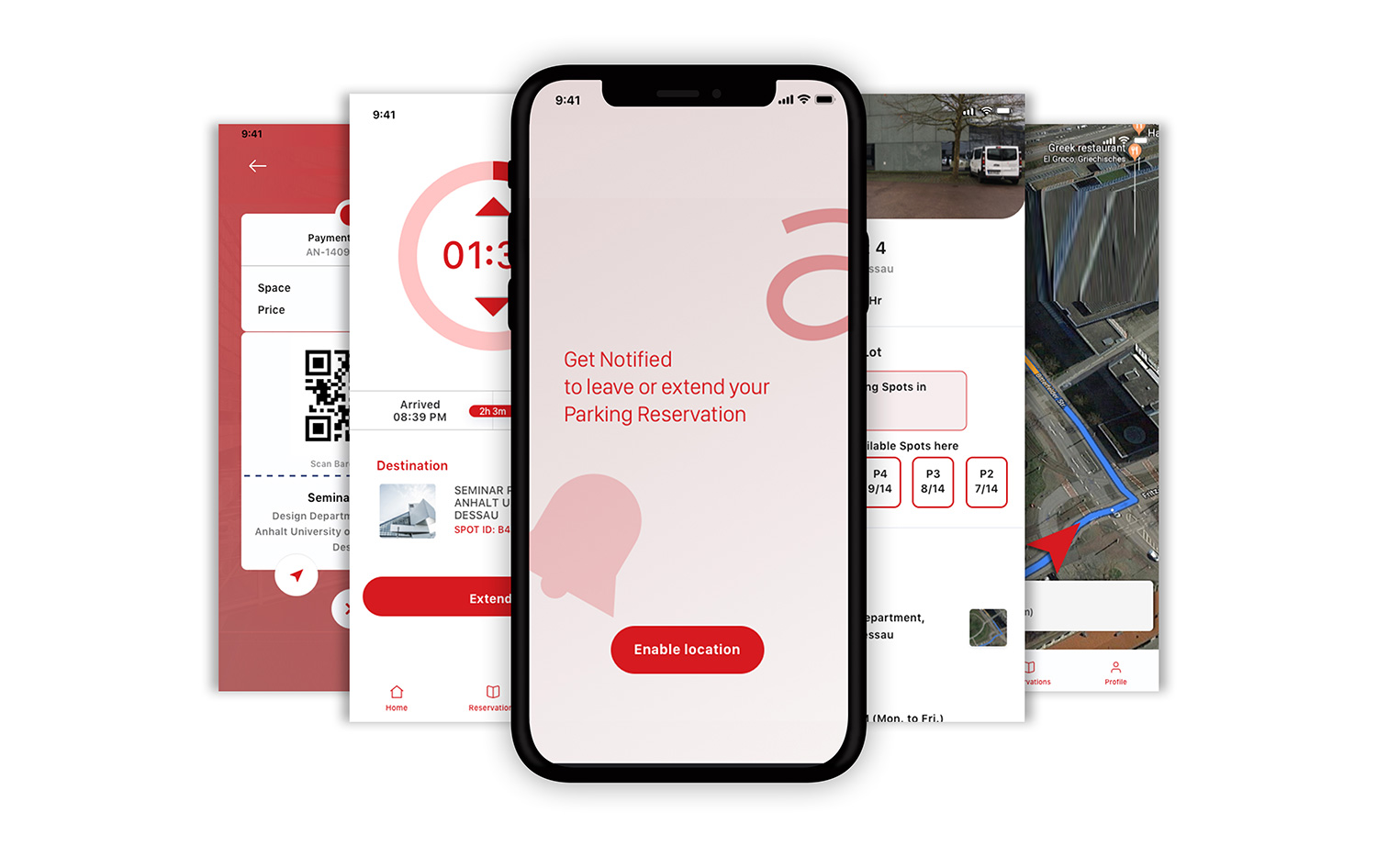
HOD Prototype
The HOD prototype has two apps, one for drivers to reserve parking and other for school parking admin to add, edit and manage parking spots.

MVP Prototype
The MVP prototype takes the parking to a city scale and has two apps, one for drivers to reserve parking and related services. The admin app is for parking lot managers to add, edit and manage their parking business.
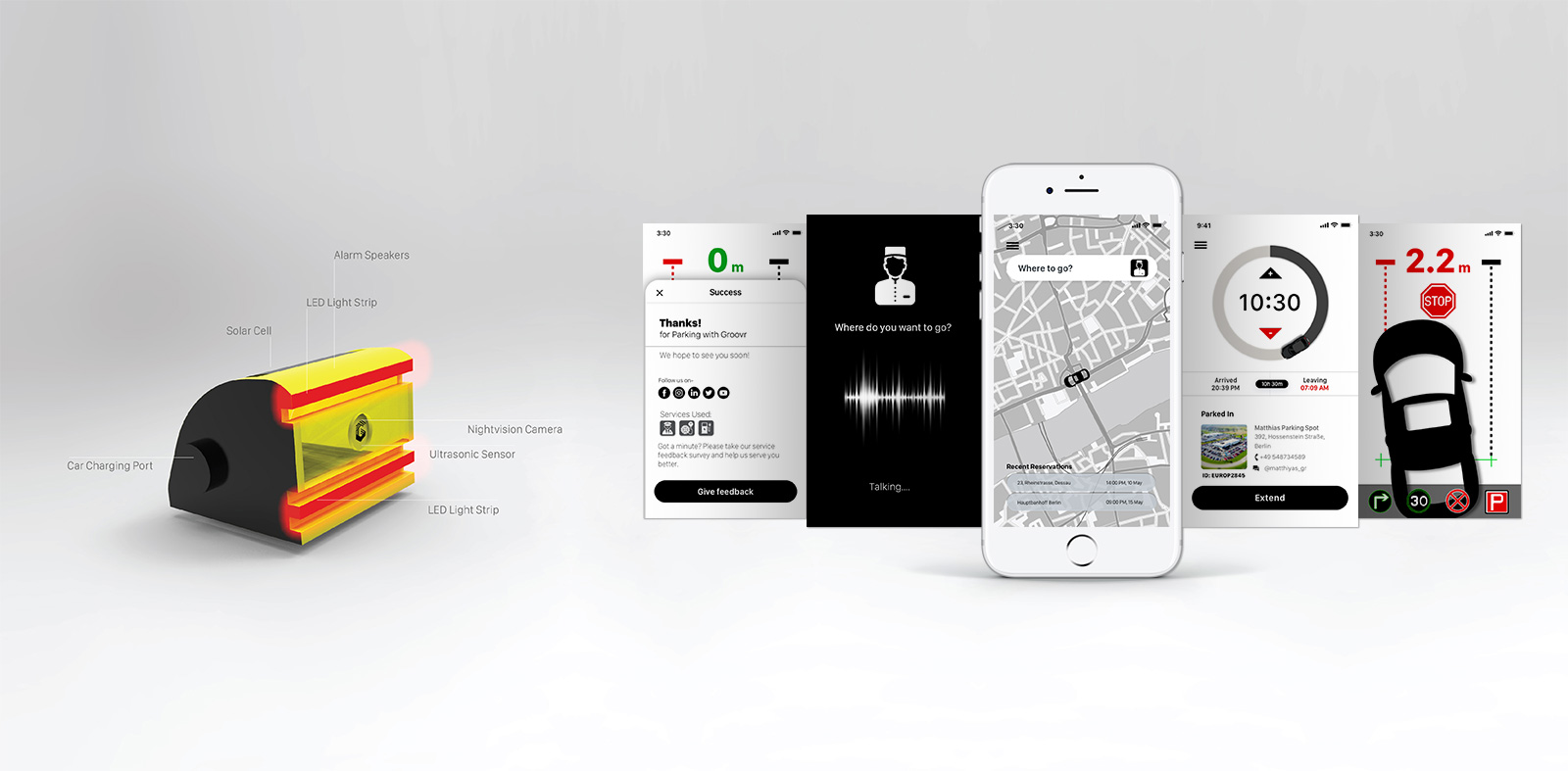
PSS Prototype
The exponential prototype is a Product Service System that comprises of ecosystem of service products and a device for parking spot installation.
HOD Prototype
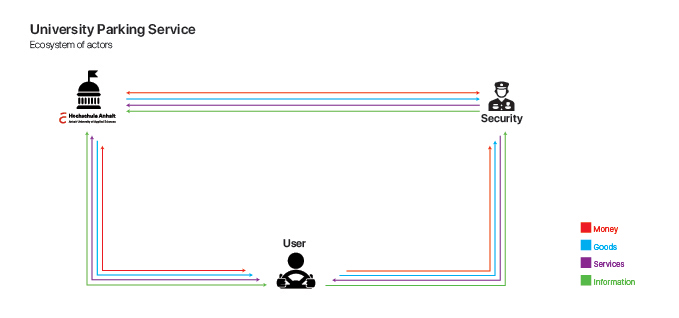
Following the discoveries from Design Space exploration, we apply HOD Design Method to investigate the parking experience from a driver and parking-manager's perspective. Later, we design a parking experience for university visitors and parking manager security person. The HOD Method comprises of activities of design mapping the ecosystem of parking, service play, taking notes and recording the observation from service play to implement in our solution designing.
HOD Prototype Findings
Reservation
To manage a Parking Spot effeciently, reservation before arriving to the destination supported with right navigation design proves to be a solution to the congestion at the Parking Space.
Information
By sharing the information about available Parking Spots, we give freedom to User to plan his itineraries.
Navigation
Effective navigation design helps User to avoid the last moment problems of finding the spots and creating congestion at the Parking Space.
User Experience
There is a plenty of room for improvising of User Experience with Parking Spaces. The challenge that remains, is to help User park his car in the right way to avoid mismanagement at the Parking Space.
Security
User have a concern for security while parking his car in a parking spot, while the University has its own security compliances.
Convinence (Bill Payments)
Automatic Payments can prove to be a great feature of this service, we need to come up with better and faster process for checkout, billings and payments.
Access
In cases of University Parking was full, Users couldn‘t find any Parking Space and felt helpless in that situation.
Availability
There is an acute need to scale this prototype to expand the availability of more Parking Spots to the Users.
Accessibility
How might we make sure that we have some Parking Spots equipped with tools and services that can enable them serve physically challenged and disabled people.
MVP Prototype Findings
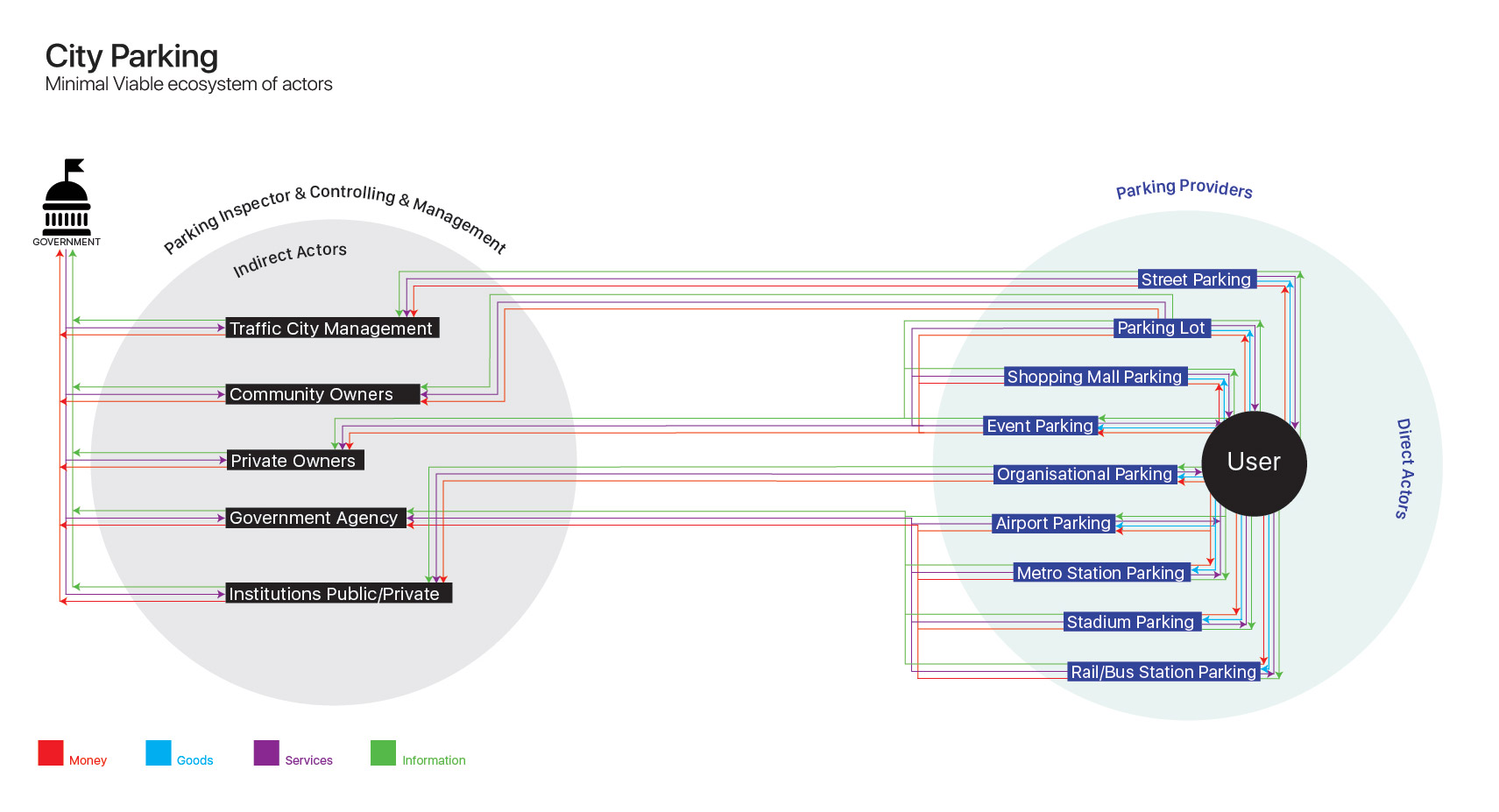
More Parking Spaces
Parking Lots are mostly located at far end locations of cities and are far from desired location for Parking by the City Drivers, to sum up this gap, we need to bring more Parking Spaces from hidden locations that comprises of Individuals, Private Owners, Shops, Restaurants, Cafes, Road Side Offices, Buildings, Housings.
Standardisation of Spots
For a better User Experience, standardisation of Parking Spot quality must be done to result in an uniform better customer experiences. By using a Hardware we can make sure the Spots have similar embedded User Experience for Drivers, with the researched features for the system.
Communication
Chatbots for User support in helpdesk, minising load of support requests from numerous Users.
Social
Chat among Users, Sharer & Driver, can help social interactions and connections formations, while reducing the cost for support service.
User Experience
Parking User Experience must be improvised while inspiring the Users to Park car in right placement, so as not to cause congestion at the Spot.
Security
Hardware security for safety and privacy assurance of both User types. Alarm system for alerting neighbours in case of nuisance.
Convenience
Wallet service for easy transaction and automated transaction without any pause or breaks. Automated Checkout system without driving inturruption, chats among Users during trips.
Access
Looking for Social Parking Spaces in the Housing, Road Side Business, Individuals and Office spaces. Democratising access to hidden and privately owned Parking Spots by Sharing feature can help suffice needs for Parking in heavily congested areas.
Availability
Automated Checkin and Checkout, can serve in efficient usage of Spots, while making them available in real time. Features like taking offline and online can take care of Users Privacy and Needs for self.
Accessibility
Standardising Disabled/ Handicapped support in the Spot category. Making sure all Spots have a standard designed support system at Handicapped Parking Spots. A Voice Chat assistant PAM (Parking Assistant Manger) introduction for busy and disabled Users.
Bad Parking Behaviour
It was observed while research and testing MVP, that users are parking in a wrong way and this is leading to traffic jams and congestions, specially in inner city areas. Something needs to be done for changing driver behaviours with Parking.
Final Solution
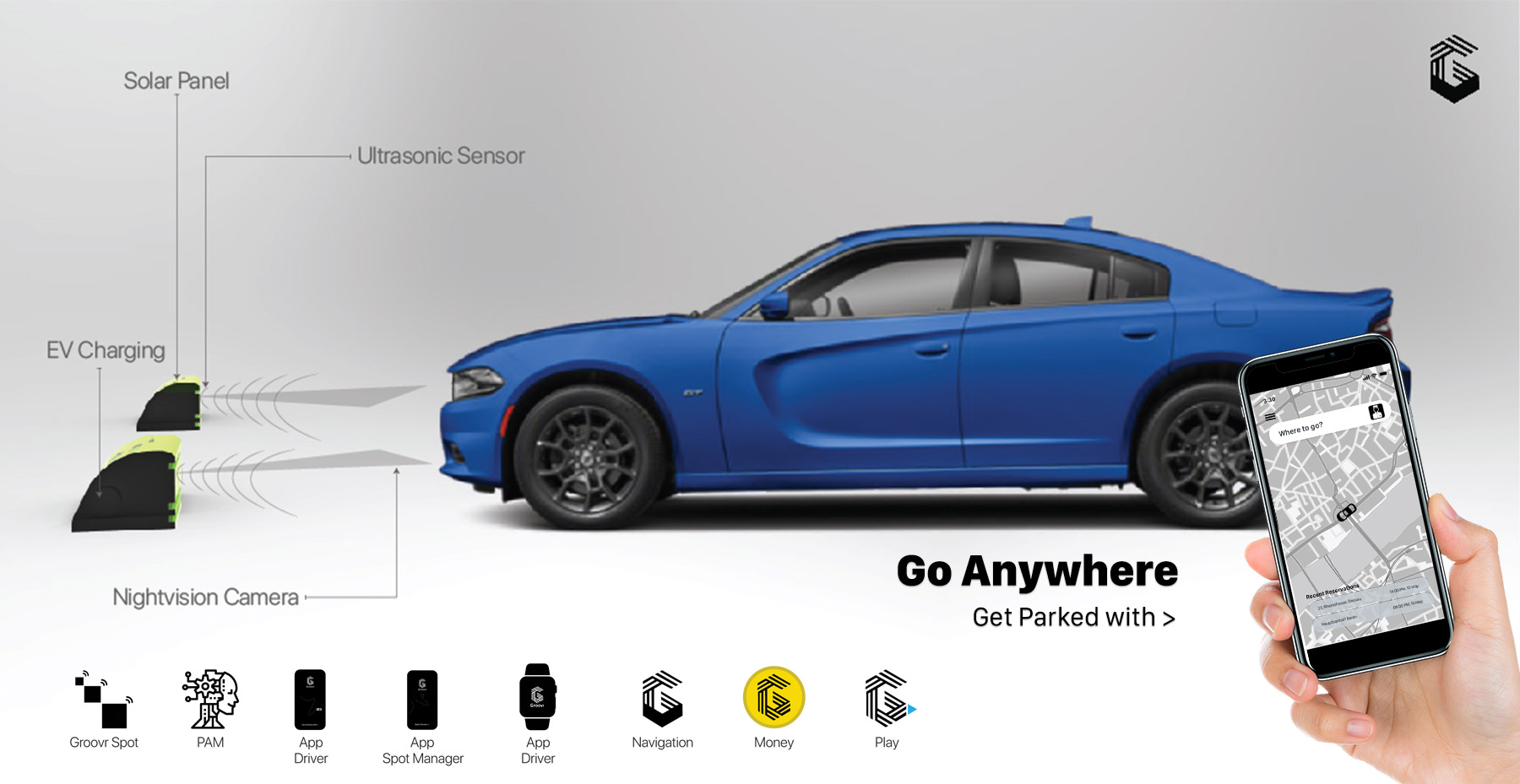
Following these insights, we began to design the Groovr Ecosystem
of devices and network that comprises of three
main actors Driver, Spot Manager and the CMS. Driver interacts with Groovr by five touchpoints iwatch,
mobile phone, car, Groovr Spot and CMS. These interactions connect User with Groovr cloud servers while his analytics becomes apart of Groovr‘s driver demographics.
Spot Manager interacts with Groovr at four touchpoints namely, mobile phone, laptop, Groovr Spot and CMS (Central Monitoring System). CMS acts as an admin to this network ecosystem that maintains servers and all SaaS based solutions.
Gamification Design
MVP findings suggested bad parking behaviours in unattended parking spaces, to address this issue I came up with a Problem Statement, "How might we cure this bad parking behaviour that leads to chaos in unattended parking layouts, causing traffic jams, inefficient parking space utilisation while leaving other cars blocked and inaccessible." To solve this problem, I came up with a product service system concept to gamify the parking activity.
The system rewards good user behaviour to inculcate positive habits with parking in an unattended automated parking spot. The gamification system works in four steps: Arrive & Play, Park Right & Check-in (to receive prizes and cool titles in the users' community), Play & Leave and Check-out & Billings.
To ensure the functionality of this system, I designed a parking spot device that also offers features like assistive parking, automated check-out and check-ins, car finder, gamification and EV-charging. The device assures excellent customer experience while helping with automating the system without any need for human intervention.
UX & Systems Architecture Design
System Prototype & Design
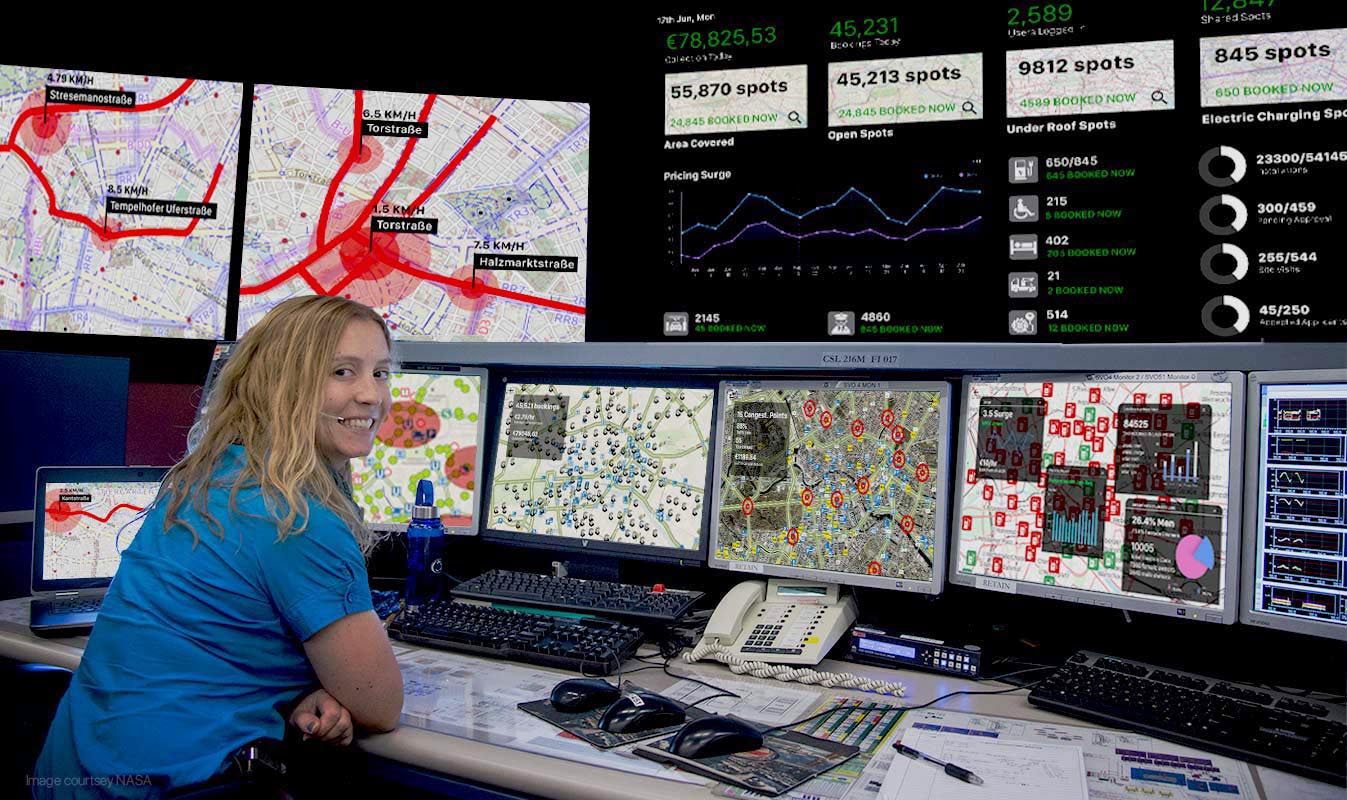
Groovr Spot devices installed across parking spaces in a city, form a robust network system for parking space management. The network system, thus formed, addresses traffic congestion caused by individuals searching for parking spots. Since every travel by a car starts and ends on a parking spot, using this collective data we can effectively balance traffic congestion in a city by proposing strategic navigation routes to users, escaping those situations that can cause congestion on roads.
This can help users to reduce travel times while saving fuel and money, to minimise air-pollution caused by private vehicles and traffic congestion in a city.
The system design addresses these issues while collaborating with other players in the ecosystem to offer more value to Groovr users, ensuring excellent customer experiences with Groovr Ecosystem of Products & Services.
To see the final presentation of this project, please click here- Masters Presentation

